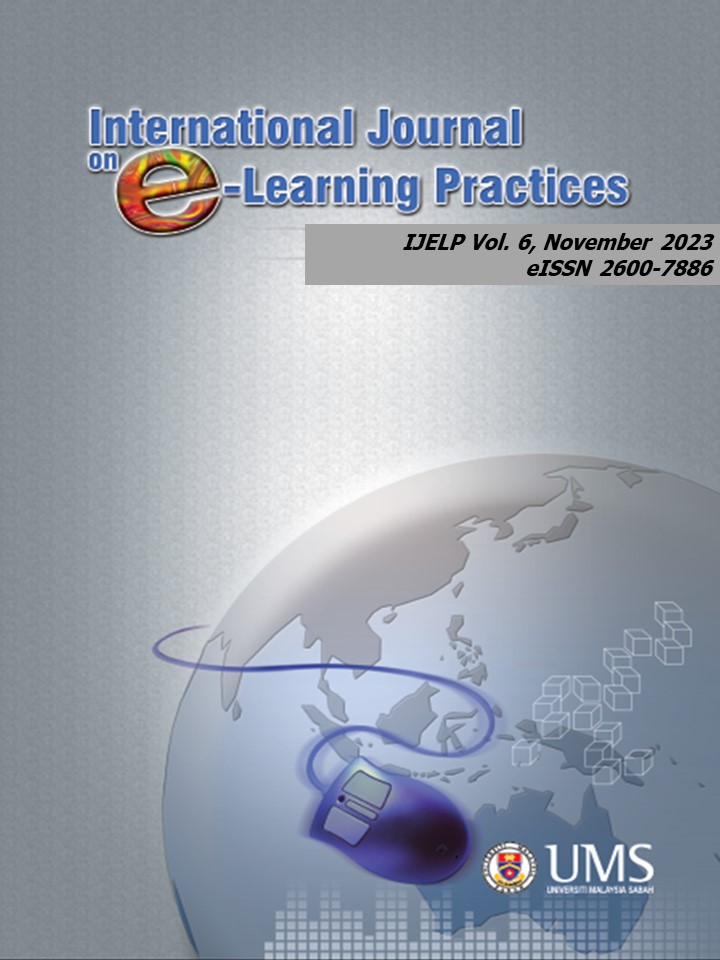Enhancing English Oral Skills among Malaysian Rural School Students through the Implementation of Virtual Reality (VR)
DOI:
https://doi.org/10.51200/ijelp.v6i1.4551Keywords:
ESL, ESL Speaking, Oral Skills, Virtual Reality, Rural SchoolAbstract
This research aims to determine the perception of rural secondary school students on the implementation of virtual reality (VR) as an alternative to the traditional classroom setting, more specifically in the setting of an oral skill lesson. In addition, the perception of the students includes the general perception, motivation levels, interest as well as the skill development of the students when subjected to a VR classroom and their effects on the mentioned aspects. A total of 39 respondents from Sekolah Menengah Kebangsaan Desa Kencana were involved in this research. This study employed a multi-method research design. Based on the results, it is found that the perception of the respondents was generally quite positive and a majority preferred a VR environment compared to a traditional setting in the context of learning speaking skills. Respondents have stated that the interactivity and new experience presented with the VR environment brings new light to their motivation and interest and they showed a keen interest in learning English compared to traditional settings. However, there are several subjects who view the implementation in a negative light, as would be portrayed in the data findings. In conclusion, both research objectives were answered, and several implications were discovered. Several suggestions are recommended in order to further this topic at the end of the research. In conclusion, this research believes that the implementation of VR would be able to increase the motivation, interest and skill development of ESL learners, specifically in speaking skills and therefore investigate whether VR classrooms appear as a better alternative to our current learning environment.
References
Biocca, F. (1997) The Cyborg’s Dilemma: Progressive Embodiment in Virtual Environments. Journal of Computer Mediated-Communication, 3, 0-0.
Blanka Klimova. (2021). Use of Virtual Reality in Non-Native Language Learning and Teaching. University of Hradec Kralove, Rokitanskeho 62, 500 03 Hradec Kralove, Czech Republic. Procedia Computer Science 192 (2021) 1385–1392. https://doi.org/10.1016/j.procs.2021.08.141.
Burdea, G.C., & Coiffet, P. (2003). Virtual Reality Technology. Presence: Teleoperators & Virtual Environments, 12, 663-664.
Campos, E., Hidrogo, I., & Zavala, G. (2022). Impact of virtual reality use on the teaching and learning of vectors. Frontiers. https://doi.org/10.3389/feduc.2022.965640.
Chen, C.J. (2009). Theoretical Bases for Using Virtual Reality in Education. DOI:10.1162/105474603322955950.
Czerkawski, B., & Berti, M. (2020). Language learning in the 21st century: current status and future directions. In B. Dupuy and M. Grosbois (Eds), Language learning and professionalization in higher education: pathways to preparing learners and teachers in/for the 21st century (pp. 11-35). Research-publishing.net. https://doi.org/10.14705/rpnet.2020.44.1100.
Dede, C., Ketelhut, D. J., & Ruess, L. (2017). Immersive interfaces for engagement and learning. Science, 357(6349), 68-71.
Elmqaddem, N. (2019). Augmented Reality and Virtual Reality in Education. Myth or Reality? International Journal of Emerging Technologies in Learning (iJET), 14(03), pp. 234–242. https://doi.org/10.3991/ijet.v14i03.9289.
Yang, J.C., C.H. Chen, M.C. Jeng. (2010). Integrating video-capture virtual reality technology into a physically interactive learning environment for English learning. Faculty of Computers & Education, v55 n3 p1346-1356.
Safranj. J. (2015). Advancing listening comprehension through movies. Procedia - Social and Behavioral Sciences. https://doi.org/10.1016/j.sbspro.2015.04.513.
Loup, Guillaume & Serna, Audrey & Iksal, Sébastien & George, Sébastien. (2016). Immersion and Persistence: Improving Learners’ Engagement in Authentic Learning Situations. 9891. 10.1007/978-3-319-45153-4_35.
Martin, W., & Schifter, C. (2018). Virtual Reality as an Educational Tool: A Review of the Literature. International Journal of Emerging Technologies in Learning (iJET), 13(5), 28-39
McCabe, P., Bowers, J., Whitelock, D., & Sharples, M. (2018). The impact of virtual reality on education: A meta-analysis of design features and learning outcomes. Journal of Educational Psychology, 110(4), 514–535
Parmaxi, A. (2020). Virtual reality in language learning: a systematic review and implications for research and practice. Interactive Learning Environments. 1-13. 10.1080/10494820.2020.1765392.
Rau, P., Chen, Y., & Chen, Y. (2019). The effects of virtual reality on spatial reasoning skills: A
meta-analysis. Journal of Educational Technology Development and Exchange (JEDE), 12(1), 1-22.
Riva, G., Wiederhold, B. K., & Gaggioli, A. (2016). Being different: The transformative potential
of virtual reality. Annual Review of CyberTherapy and Telemedicine, 14, 3–6.
Thandevaraj, E. , Gani, N. and Nasir, M. (2021) A Review of Psychological Impact on Students Online Learning during Covid-19 in Malaysia. Creative Education, 12, 1296-1306. doi: 10.4236/ce.2021.126097.
Rachel, Y.Y., P.L. Wong , P.W. Wong, C.P. Goh. (2020). The Implementation of Virtual Reality (VR) in Tertiary Education in Malaysia. Faculty of Computing and Information Technology, Tunku Abdul Rahman University College.
Yurko, N., & Styfanyshyn, I. (2020). Listening Skills in Learning a Language: The Importance, Benefits and Means of Enhancement. Collective Monographs, 38-46.






